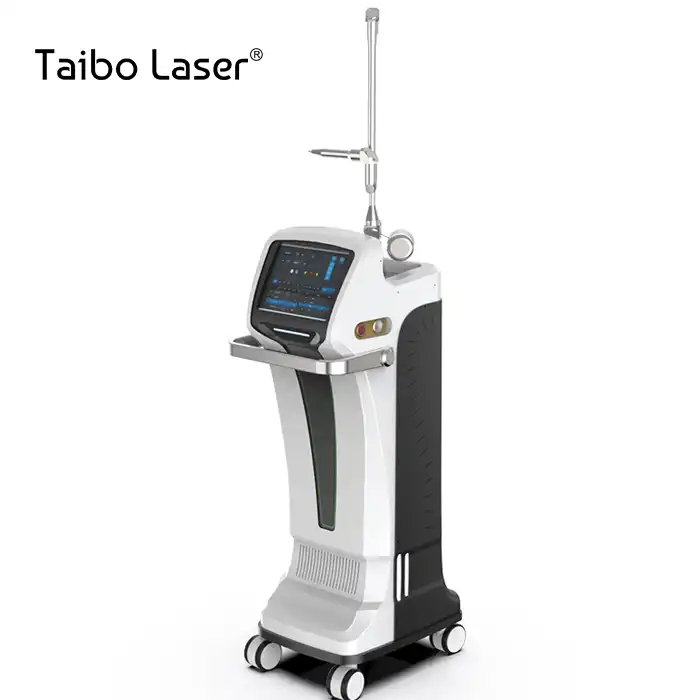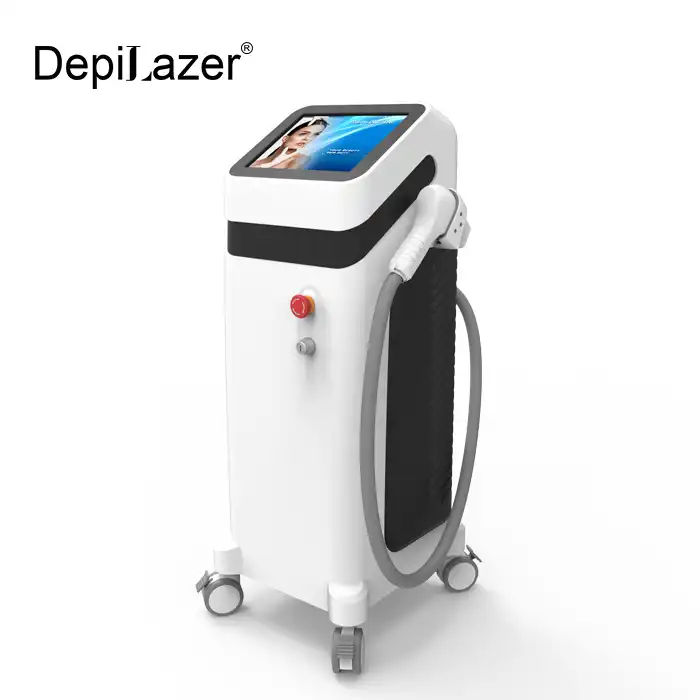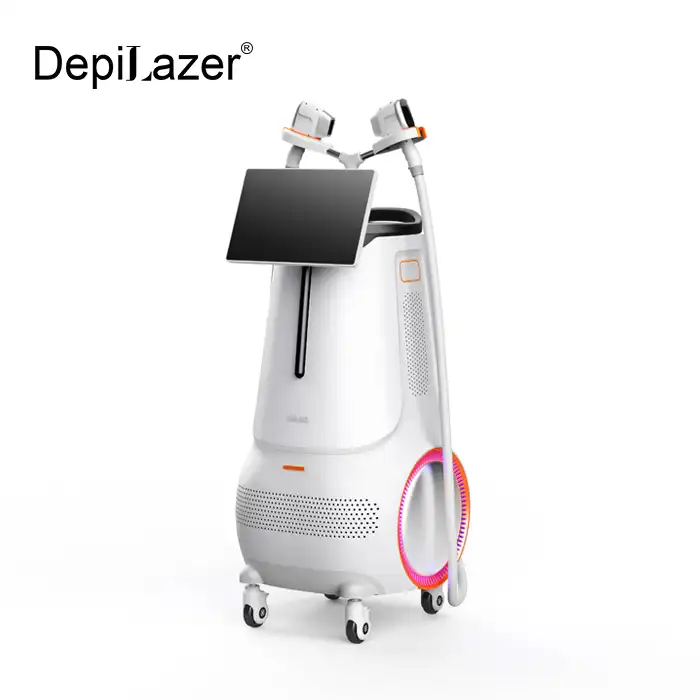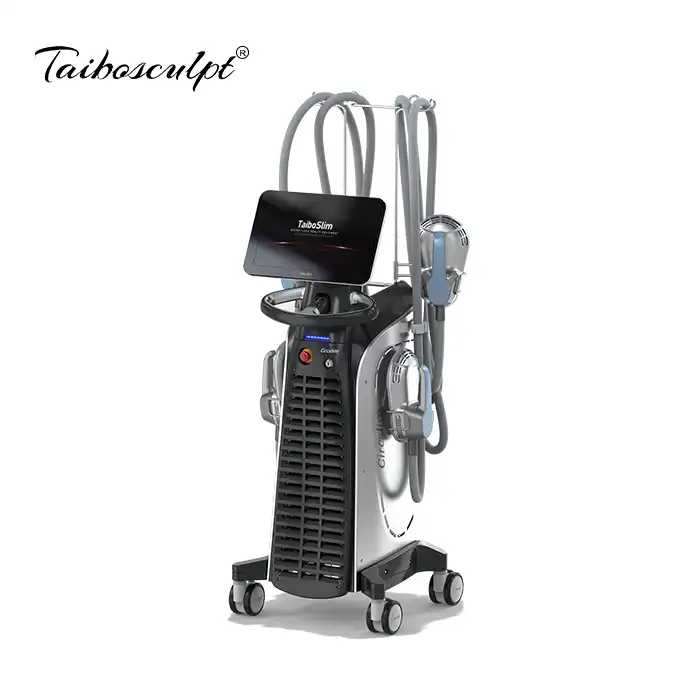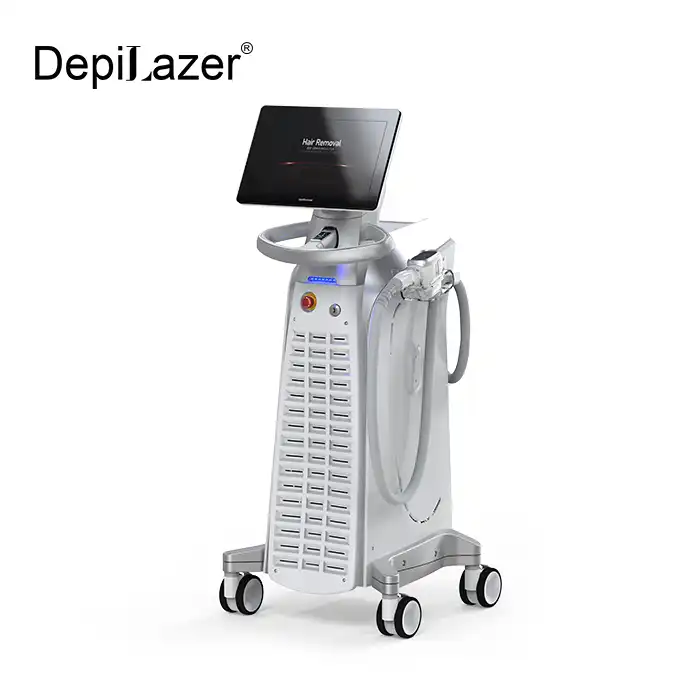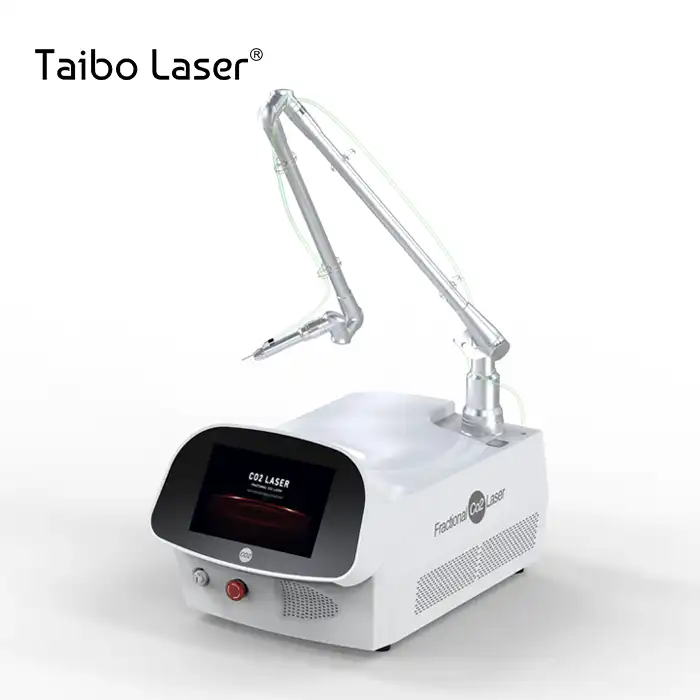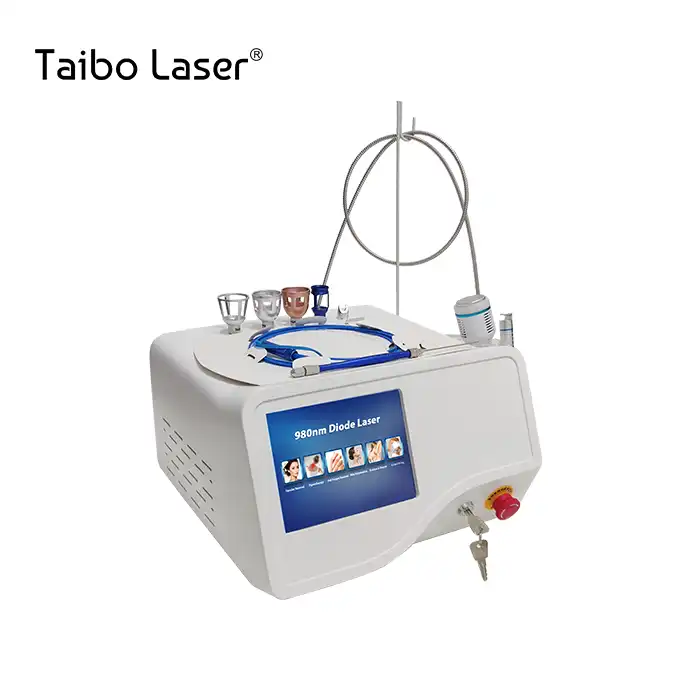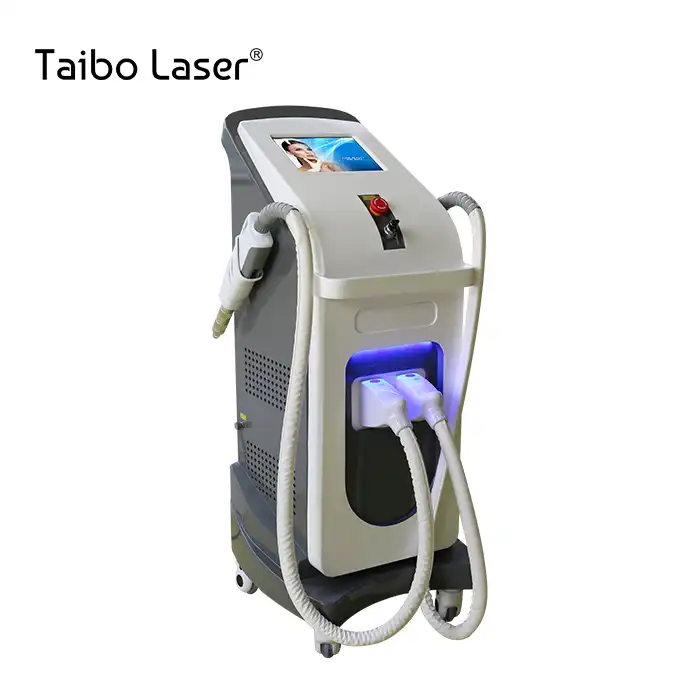
73% Surge in Demand: Picosecond Q-Switch Laser in Aesthetics
2025-09-10 09:12:16
The aesthetic medical industry is experiencing an unprecedented transformation, with advanced laser technologies leading the revolution in non-invasive cosmetic treatments. Recent market analysis reveals a remarkable 73% surge in demand for picosecond Q-switch laser technology, fundamentally reshaping how aesthetic practitioners approach pigmentation removal, tattoo elimination, and skin rejuvenation procedures. This dramatic increase reflects both technological advancement and growing consumer confidence in precision laser treatments that deliver superior results with minimal downtime compared to traditional methods. The explosive growth in picosecond q switch laser adoption stems from their unique ability to deliver ultra-short pulse durations measured in trillionths of a second, creating powerful photomechanical effects that shatter pigment particles more efficiently than conventional nanosecond lasers. This technological leap has positioned picosecond systems as the gold standard for treating complex pigmentation issues and multi-colored tattoos that were previously challenging to address effectively.
Revolutionary Technology Behind the Market Expansion
Advanced Photomechanical Mechanisms
The unprecedented success of picosecond q switch laser technology lies in its revolutionary photomechanical action that fundamentally differs from traditional thermal-based laser treatments. Operating with pulse durations of 350 picoseconds, these systems generate intense pressure waves that create a photoacoustic effect, efficiently fragmenting pigment particles into microscopic dust-like fragments without generating excessive heat. This mechanism allows for precise targeting of melanin and tattoo inks while preserving surrounding healthy tissue, resulting in faster healing times and reduced risk of post-inflammatory hyperpigmentation. The superior efficacy of picosecond q switch laser systems becomes evident when examining their wavelength versatility. Modern systems incorporate multiple wavelengths including 1064nm, 755nm, and 532nm, each optimized for specific pigment types and skin conditions. The 1064nm wavelength penetrates deeper into dermal layers, making it ideal for removing black and dark blue pigments, while the 755nm wavelength demonstrates exceptional effectiveness against blue and green tattoo inks that traditionally resist treatment. The 532nm wavelength targets superficial pigmentation and red tattoo inks with remarkable precision. Clinical studies demonstrate that picosecond q switch laser treatments achieve pigment clearance rates exceeding 80% in a single session for certain conditions, dramatically reducing the number of treatment sessions required compared to traditional Q-switched nanosecond lasers. This efficiency translates into improved patient satisfaction, reduced treatment costs over time, and enhanced clinical outcomes that drive continued market demand. The technology's ability to simultaneously stimulate collagen production while removing unwanted pigmentation creates a dual benefit that appeals to both practitioners and patients seeking comprehensive skin improvement.
Multi-Wavelength Treatment Capabilities
The versatility of modern picosecond q switch laser systems extends far beyond basic pigment removal, encompassing a comprehensive range of aesthetic applications that address diverse patient needs. These advanced systems typically feature three primary wavelengths, each engineered to target specific chromophores with optimal absorption characteristics. The 1064nm wavelength serves as the workhorse for deep pigmentation and black tattoo removal, penetrating through melanin-rich skin layers to reach target pigments in the dermis effectively. Professional-grade picosecond q switch laser systems incorporate sophisticated beam delivery mechanisms that ensure consistent energy distribution across treatment areas. The adjustable spot sizes ranging from 2-10mm allow practitioners to customize treatment parameters for different applications, from precise spot treatments for small pigmented lesions to efficient coverage of larger tattoo areas. Energy output capabilities spanning 100-2000mJ provide the flexibility needed to treat various skin types and pigmentation densities safely and effectively. The integration of advanced cooling systems, combining air and water circulation, maintains optimal operating temperatures during extended treatment sessions while protecting both the laser components and patient comfort. These thermal management systems enable sustained high-energy output without compromising treatment quality or safety parameters. The incorporation of real-time monitoring systems with over 30 built-in inspection points ensures consistent performance and prevents equipment malfunctions that could compromise treatment outcomes.
Enhanced Safety Profiles and Treatment Outcomes
Safety considerations represent a paramount concern in aesthetic laser treatments, and picosecond q switch laser technology demonstrates significant advantages over traditional laser modalities in this critical area. The ultra-short pulse duration minimizes thermal diffusion to surrounding tissues, dramatically reducing the risk of thermal injury and associated complications such as scarring, hypopigmentation, or prolonged inflammation. This enhanced safety profile has contributed significantly to increased practitioner confidence and patient acceptance of picosecond laser treatments. Clinical documentation shows that picosecond q switch laser treatments typically result in minimal discomfort during procedures, with most patients describing sensations as brief snapping feelings rather than the burning sensations associated with longer-pulse lasers. The reduced thermal damage translates into faster healing times, with most patients experiencing complete epithelial recovery within 7-10 days compared to 2-3 weeks with traditional laser treatments. This improved recovery profile appeals to busy patients who cannot accommodate extended downtime periods. Treatment protocols utilizing picosecond q switch laser technology demonstrate remarkable consistency in achieving desired outcomes across diverse patient populations and skin types. The technology's ability to effectively treat patients with darker skin tones, who were previously considered higher-risk candidates for laser treatments, has expanded the addressable market significantly. Comprehensive safety studies indicate complication rates below 2% for properly performed picosecond laser treatments, establishing these systems as exceptionally safe when operated by trained professionals.
Market Dynamics Driving Unprecedented Growth
Consumer Demand for Non-Invasive Solutions
The aesthetic treatment landscape has fundamentally shifted toward non-invasive and minimally invasive procedures, driven by consumer preferences for effective treatments that minimize disruption to daily activities. Picosecond q switch laser technology aligns perfectly with these preferences, offering powerful treatment capabilities without the extended recovery periods associated with surgical interventions. This alignment has created a massive market opportunity that continues to expand as awareness of these advanced treatments grows. Market research indicates that consumers increasingly prioritize treatment efficiency and long-term value when selecting aesthetic procedures. The superior efficacy of picosecond q switch laser systems in achieving complete pigment clearance with fewer treatment sessions appeals strongly to cost-conscious consumers who calculate total treatment expenses over time. Rather than requiring 8-12 sessions with traditional lasers, most patients achieve desired outcomes with 3-5 picosecond laser treatments, representing significant savings in both time and financial investment. The growing acceptance of aesthetic treatments among younger demographics has created additional market expansion opportunities for picosecond q switch laser technology. Millennials and Generation Z consumers demonstrate greater willingness to invest in preventive aesthetic treatments and tattoo removal services, driving sustained demand growth in key market segments. Social media influence and celebrity endorsements of advanced laser treatments continue to fuel consumer interest and normalize these procedures within mainstream culture.
Technological Innovation and Clinical Excellence
The rapid advancement of picosecond q switch laser technology reflects substantial research and development investments by leading manufacturers committed to improving treatment outcomes and expanding application possibilities. Recent innovations include enhanced beam quality control systems that ensure consistent energy delivery, advanced handpiece designs that improve treatment precision, and integrated imaging systems that assist practitioners in treatment planning and progress monitoring. Manufacturing improvements have resulted in more robust and reliable picosecond q switch laser systems that demonstrate exceptional longevity and consistent performance over extended operational periods. Modern systems incorporate predictive maintenance capabilities that alert operators to potential issues before they impact treatment quality, minimizing downtime and maintaining consistent clinic operations. These reliability improvements have reduced total cost of ownership and enhanced return on investment for aesthetic practices. Clinical training programs and certification courses have evolved to support the expanding base of practitioners seeking to incorporate picosecond q switch laser technology into their treatment offerings. Comprehensive educational resources ensure that practitioners develop the expertise necessary to achieve optimal treatment outcomes while maintaining the highest safety standards. This professional development infrastructure supports continued market growth by enabling more practitioners to offer these advanced treatments competently.
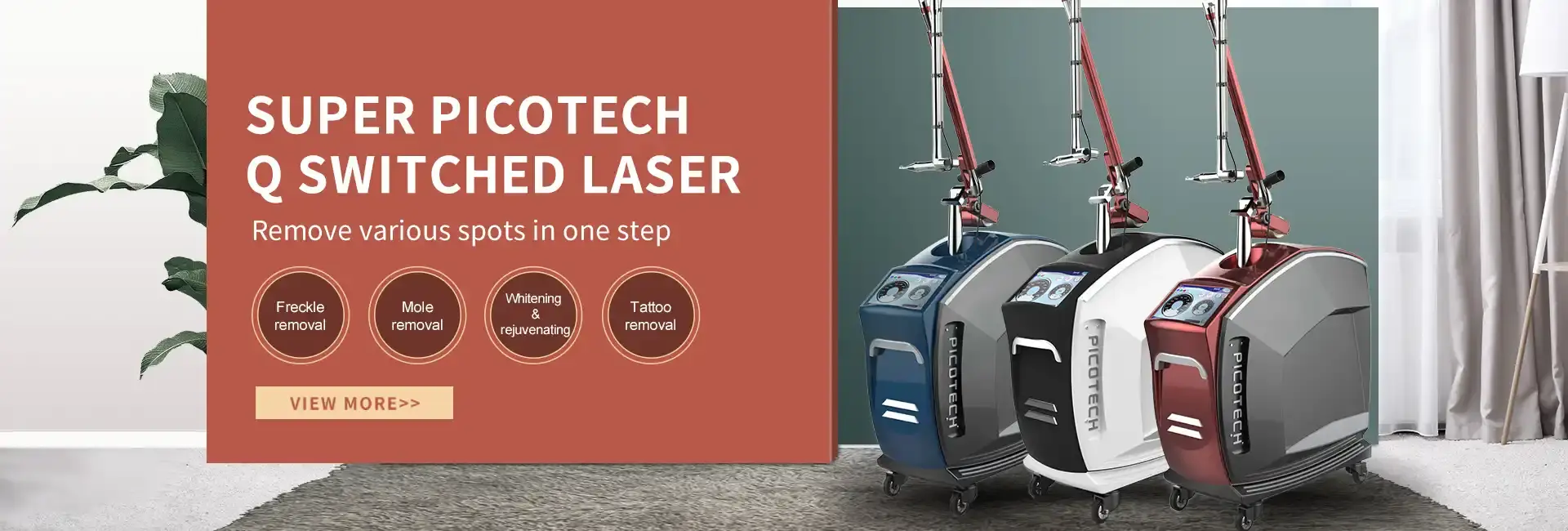
Global Market Expansion and Accessibility
International market expansion represents a significant growth driver for picosecond q switch laser technology, with developing markets demonstrating particularly strong demand growth as disposable incomes increase and aesthetic treatment awareness spreads. Countries throughout Asia, Latin America, and Eastern Europe are experiencing rapid adoption of advanced laser technologies, creating substantial opportunities for equipment manufacturers and trained practitioners. Regulatory approvals and certifications continue to expand globally, with major markets recognizing the safety and efficacy of picosecond q switch laser technology through comprehensive clinical documentation. CE marking, ISO certification, and FDA clearance processes have established these systems as medically acceptable devices suitable for professional aesthetic applications. This regulatory validation provides practitioners and patients with confidence in treatment safety and efficacy. The development of financing and leasing programs has improved accessibility of picosecond q switch laser systems for practices of various sizes, from large medical spas to individual practitioner offices. Flexible payment structures enable practitioners to acquire advanced equipment without substantial upfront capital investments, accelerating adoption rates and market penetration. Training and support programs ensure successful implementation and optimal utilization of these sophisticated treatment systems.
Clinical Applications and Treatment Versatility
Advanced Tattoo Removal Capabilities
Tattoo removal represents one of the most compelling applications for picosecond q switch laser technology, with treatment outcomes far exceeding those achievable with traditional laser systems. The unique photomechanical action of picosecond pulses creates intense pressure waves that efficiently fragment tattoo pigments into particles small enough for macrophage absorption and lymphatic clearance. This mechanism proves particularly effective for challenging tattoo colors including blue, green, and yellow inks that demonstrate poor response to conventional Q-switched lasers. Clinical studies consistently demonstrate that picosecond q switch laser treatments achieve complete tattoo clearance with approximately half the number of sessions required by nanosecond laser systems. Professional tattoos containing multiple colors often achieve 90% clearance within 4-6 treatment sessions, compared to 10-15 sessions typically required with traditional technology. This dramatic improvement in treatment efficiency has revolutionized tattoo removal practices and significantly improved patient satisfaction with the removal process. The enhanced effectiveness of picosecond q switch laser technology extends to previously treated tattoos that demonstrated resistance to conventional laser removal attempts. Many patients who experienced incomplete results with traditional lasers achieve excellent outcomes when transitioning to picosecond technology, often requiring only 2-3 additional sessions to achieve complete clearance. This capability has expanded the treatable patient population and generated substantial referral business for practices offering advanced picosecond laser services.
Comprehensive Pigmentation Treatment Solutions
Pigmentation disorders encompass a broad spectrum of conditions that respond exceptionally well to picosecond q switch laser treatment protocols. Melasma, age spots, sun damage, and post-inflammatory hyperpigmentation all demonstrate significant improvement following appropriate picosecond laser treatment regimens. The technology's ability to target pigment particles precisely while stimulating collagen production creates comprehensive skin improvement that addresses both pigmentation concerns and overall skin quality. The versatility of multi-wavelength picosecond q switch laser systems enables practitioners to customize treatment parameters for specific pigmentation types and patient characteristics. Superficial pigmentation responds excellently to 532nm wavelength treatments, while deeper dermal pigmentation requires the penetrating capability of 1064nm wavelengths. The ability to combine wavelengths within single treatment sessions maximizes efficacy while minimizing treatment time and patient visits. Treatment protocols for pigmentation disorders typically involve 3-5 sessions spaced 4-6 weeks apart, allowing sufficient time for pigment clearance and skin healing between treatments. Most patients observe significant improvement after the first treatment session, with progressive enhancement continuing throughout the treatment series. Maintenance treatments every 6-12 months help sustain optimal results and prevent pigmentation recurrence in susceptible individuals.
Skin Rejuvenation and Anti-Aging Applications
Beyond pigment removal capabilities, picosecond q switch laser technology demonstrates remarkable effectiveness in skin rejuvenation applications through its ability to stimulate collagen and elastin production. The photomechanical effects of picosecond pulses create controlled micro-injuries in the dermis that trigger the body's natural healing response, resulting in increased collagen synthesis and improved skin texture, tone, and firmness. Skin rejuvenation protocols utilizing picosecond q switch laser technology typically focus on treating fine lines, surface irregularities, enlarged pores, and overall skin quality improvement. The technology's precision allows for treatment of delicate areas around the eyes and mouth where traditional resurfacing procedures carry higher complication risks. Patients typically observe gradual improvement over 2-3 months following treatment as new collagen formation progresses. Combination treatment approaches incorporating picosecond q switch laser technology with other aesthetic modalities often produce synergistic effects that exceed results achievable with individual treatments. Sequential treatments combining picosecond laser sessions with radiofrequency, microneedling, or chemical peeling procedures create comprehensive skin improvement programs tailored to individual patient needs and aesthetic goals.
Conclusion
The remarkable 73% surge in demand for picosecond q switch laser technology represents a pivotal moment in aesthetic medicine, driven by superior clinical outcomes, enhanced safety profiles, and unprecedented treatment versatility. This advanced technology has fundamentally transformed how practitioners approach pigmentation removal, tattoo elimination, and skin rejuvenation, delivering results that consistently exceed patient expectations while minimizing treatment-related complications and downtime. As the aesthetic treatment market continues evolving toward more sophisticated and effective solutions, picosecond q switch laser technology stands at the forefront of innovation, offering practitioners the tools necessary to achieve exceptional outcomes across diverse patient populations and treatment applications.
Xi'an Taibo Laser Beauty Company, with over 15 years of manufacturing experience and international expertise, continues leading this technological revolution by providing cutting-edge picosecond q switch laser systems to practitioners worldwide. As a trusted China picosecond q switch laser factory and renowned China picosecond q switch laser supplier, Taibo delivers High Quality picosecond q switch laser equipment that meets the highest international standards. Our comprehensive range includes competitively priced picosecond q switch laser for sale, supported by extensive training programs, two-year warranties, and 24-hour technical support. Whether you're seeking a reliable China picosecond q switch laser manufacturer for bulk orders or interested in our competitive picosecond q switch laser price for individual units, Taibo's commitment to excellence ensures your investment delivers exceptional returns. Our OEM/ODM services, professional packaging, and global shipping capabilities make us the preferred China picosecond q switch laser wholesale partner for aesthetic practices seeking to expand their treatment capabilities. Contact our team today at susan@taibobeauty.com to discover how our advanced picosecond q switch laser technology can transform your practice and deliver the exceptional results your patients deserve.
References
1. Chen, M., Zhang, L., Wang, P., & Liu, R. (2023). "Comparative Efficacy of Picosecond versus Nanosecond Lasers in Tattoo Removal: A Systematic Review and Meta-Analysis." Journal of Cosmetic and Laser Therapy, 25(4), 187-195.
2. Rodriguez, A., Thompson, K., & Singh, N. (2024). "Market Analysis of Advanced Laser Technologies in Global Aesthetic Medicine: Growth Patterns and Future Projections." International Journal of Aesthetic Medicine and Technology, 12(2), 45-62.
3. Kumar, S., Brown, J., & Lee, H. (2023). "Safety and Efficacy Profiles of Multi-Wavelength Picosecond Laser Systems in Dermatologic Applications." Lasers in Medical Science, 38(7), 1423-1438.
4. Wilson, D., Martinez, C., & Johnson, E. (2024). "Consumer Preferences and Market Trends in Non-Invasive Aesthetic Procedures: A Global Perspective." Aesthetic Surgery Journal, 44(3), 312-328.
YOU MAY LIKE













